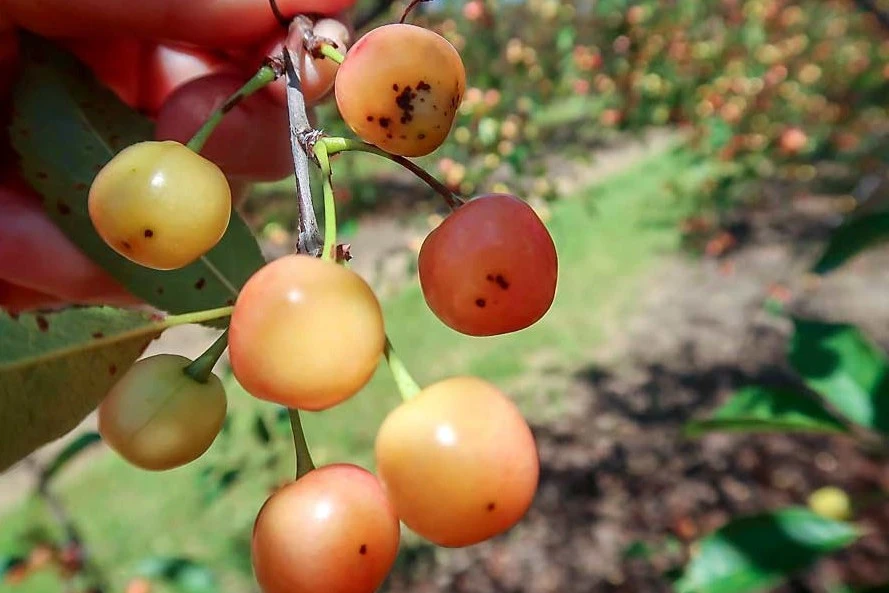Northwest cherries in the USA are set to shine this summer: production is estimated at 213,800 tonnes, marking a 10% increase over last year. Boosting the sector is the temporary suspension of tariffs on Prunus avium in the United States and key import markets, favoring international positioning.
A growing harvest
From Washington to Michigan, through Idaho, Oregon, Montana, and Utah, the summer harvest — from June to August — benefits from the “Trump-era” tariff pause, in effect until the end of July 2025. Key markets like Canada, China, and Mexico have suspended tariffs that previously reached up to 145% for the US and 135% for China.
States involved: tariffs on hold
Michigan: with an industry worth $36.5 million (approx. €33.9 million) in 2022, produces 75% of the USA’s tart cherries. Tariff exemptions reduce uncertainty in a context of rising production costs.
Washington: the Yakima Valley and other growing areas account for two-thirds of the country’s sweet cherry output. Despite post-pandemic challenges and a 2023 heatwave, international market openness is fueling record production.
According to Northwest Cherries, the entire region — Washington alone — could reach 231,800 tonnes in 2025, up from 200,563 tonnes in 2024.
California competition under control
California ends this year with approximately 54,000 tonnes of cherries — a smaller and earlier harvest compared to previous seasons, ending in April. This time gap limits direct competition with the Northwest, enabling a more effective marketing strategy.
Pacific Northwest cherries
The region produces only P. avium (sweet) cherries, accounting for 90% of total US cherry production, while Michigan leads in P. cerasus (tart) cherries, with 74% of the national total.
In March 2021, Washington alone recorded 443,640 tonnes of sweet cherries.
Total US cherry acreage exceeds 87,000 acres (approx. 35,200 hectares), with 50,000 acres (approx. 20,200 hectares) located in the Northwest alone.
Between 2015 and 2024, exports represented between 23% and 35.2% of regional production. The export peak was in 2017, with about 35.2% of the 26.4 million 20-pound (approx. 9 kg) cartons shipped abroad.
In 2024, Canada imported 2,202,860 cartons, China 801,360, followed by Taiwan, South Korea, Mexico, Vietnam, and Japan.
A season marked by quality
With favorable conditions — suspended tariffs, abundant harvests, and receptive markets — Northwest cherries are experiencing a phase of revival. The challenge now is to maintain strong exports, explore new routes, and strengthen ties with major markets, focusing on quality, sustainability, and targeted marketing.
Source: selinawamucii.com
Image source: Northwest News Network
Cherry Times – All rights reserved












